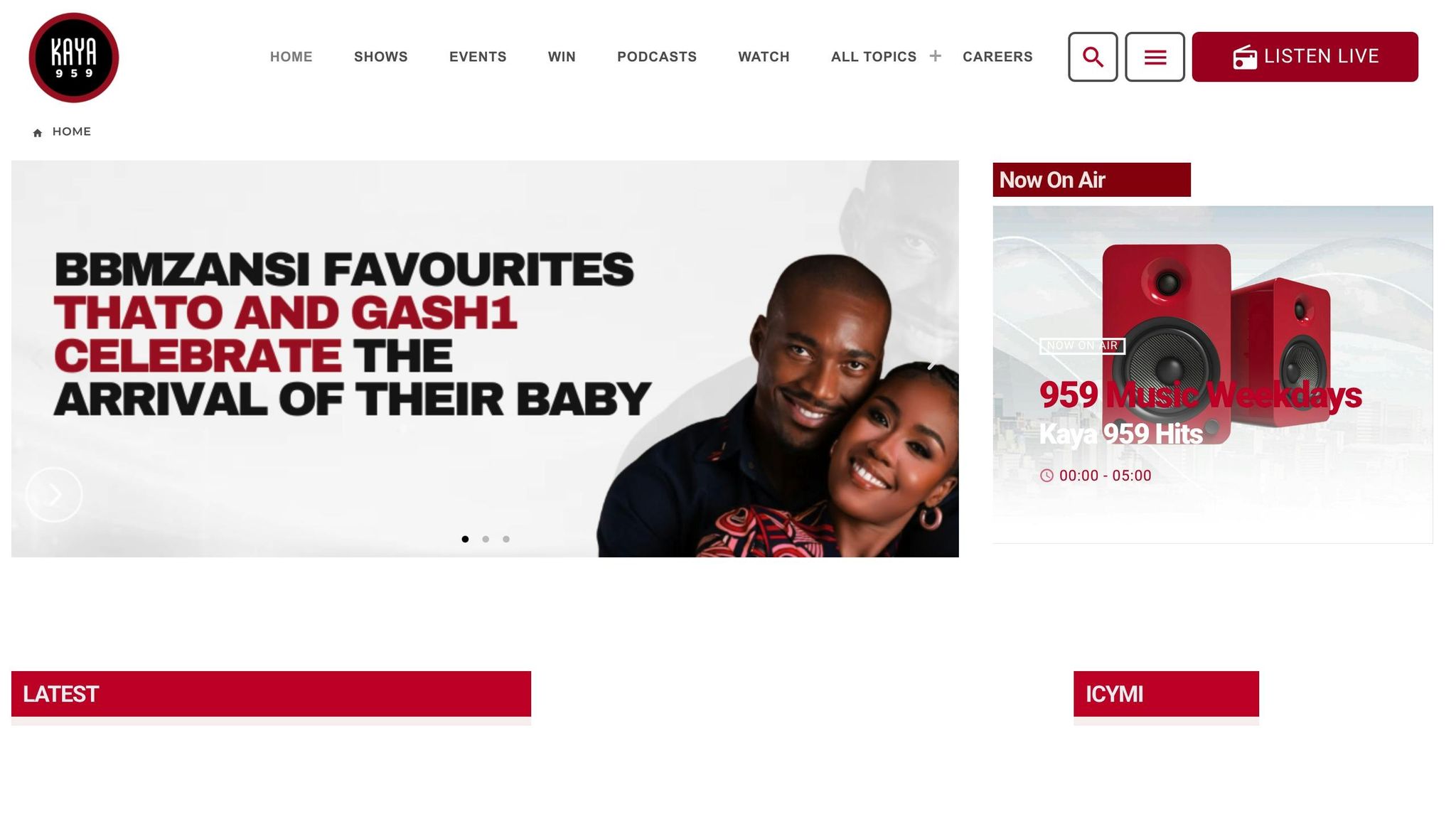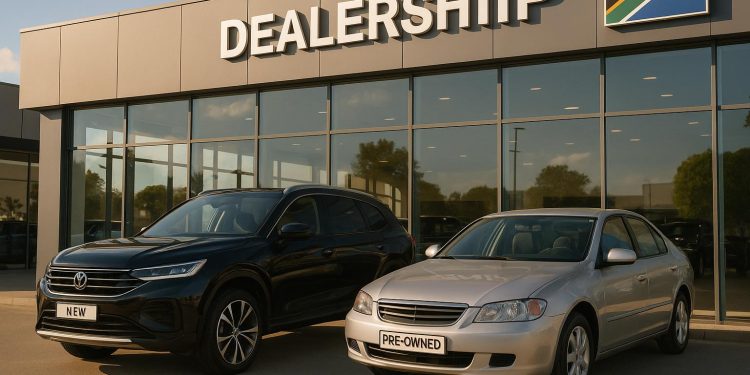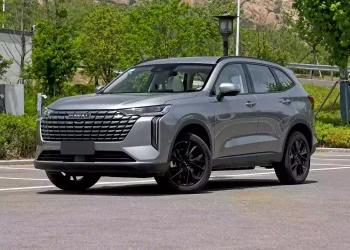In 2025, South Africa’s car market is shaped by rising costs, fluctuating interest rates, and new government policies. Here’s what you need to know:
- Pre-owned cars are gaining popularity due to lower upfront costs and better financing options. They now include features like modern safety tech and extended warranties, making them more appealing.
- New cars face challenges like higher prices, longer delivery times, and limited availability. However, they offer cutting-edge technology, full warranties, and lower initial maintenance.
- Key factors such as inflation, CO2 emissions taxes, and higher fuel prices are driving buyers toward fuel-efficient and hybrid pre-owned models.
- Government policies are encouraging local manufacturing and EV adoption, but import duties and emissions taxes are increasing costs for traditional vehicles.
Quick Comparison:
| Aspect | New Vehicles | Pre-Owned Vehicles |
|---|---|---|
| Cost | Higher upfront price | Lower upfront cost |
| Depreciation | Rapid initial depreciation | Slower after initial drop |
| Warranty | Full coverage | Limited or expired |
| Technology | Latest features | May lack recent updates |
| Maintenance | Minimal early on | May require sooner attention |
For South Africans, balancing affordability with features is key. Pre-owned cars are becoming a smart choice for many, while new cars still appeal to those seeking the latest tech and warranties.
South African Car Market Overview for 2025
Market Statistics and Trends
In 2025, South Africa’s car market is experiencing a noticeable shift as economic challenges push more buyers toward pre-owned vehicles.
Established automotive brands maintain their dominance in both new and pre-owned categories. Popular segments like bakkies, SUVs, and light commercial vehicles remain steady performers. Meanwhile, electric and hybrid vehicles are becoming more appealing in urban areas, helped by better charging infrastructure and growing awareness of greener alternatives.
Economic Factors Affecting Car Sales
Economic pressures are reshaping consumer behavior in the car market:
- Higher financing costs: Recent monetary policy changes have made loans more expensive, causing many buyers to delay purchasing new cars and instead focus on pre-owned options.
- Rising inflation: With reduced purchasing power, middle-income families are prioritizing well-maintained pre-owned vehicles over new ones.
- Tighter credit conditions: Limited access to credit and a weakening currency have made new cars less affordable, increasing interest in certified pre-owned programs.
- Fuel price hikes: As fuel costs climb, demand grows for fuel-efficient pre-owned compact cars and hybrid models.
These economic shifts are influencing pricing trends and shaping buyer preferences, setting the stage for further analysis in the next section.
South Africa’s used car market shifts | KayaBiz | KayaFM

New vs Pre-Owned Vehicles: Direct Comparison
When deciding between a new or pre-owned vehicle, it often comes down to balancing upfront costs with long-term value. Each choice has its own perks and challenges.
Pros and Cons of Each Option
New vehicles are packed with the latest tech, come with full manufacturer warranties, and have a clean maintenance slate. They often feature cutting-edge safety systems and modern infotainment setups. Plus, there’s something special about being the first owner. On the flip side, they take a big hit in value as soon as they leave the lot.
Pre-owned vehicles, on the other hand, are easier on the wallet upfront and have already gone through the steepest part of their depreciation curve. For budget-conscious buyers, this can be a big draw. However, they might require more maintenance sooner and often come with limited or no warranty coverage.
| Aspect | New Vehicles | Pre-Owned Vehicles |
|---|---|---|
| Initial Cost | Higher purchase price | Lower upfront cost |
| Depreciation | Rapid early depreciation | More gradual decline after initial drop |
| Warranty | Full manufacturer coverage | Limited or expired warranty coverage |
| Technology | Latest features | May lack recent updates |
| Maintenance | Minimal early maintenance | Potential for earlier maintenance needs |
| Selection | Limited to current model year | Broader range of model years and options |
While new vehicles might come with lower interest rates on financing, their higher price can result in monthly payments that rival those of pre-owned cars. Pre-owned options also tend to have lower insurance premiums, thanks to their reduced replacement value.
Considering these factors within the scope of long-term ownership paints a clearer picture. This naturally leads to evaluating resale value and overall costs over time.
Resale Value and Long-Term Costs
The true cost of vehicle ownership goes beyond the sticker price and initial features. Long-term expenses play a huge role in the decision-making process.
New vehicles depreciate quickly in the first few years, while pre-owned cars, having already absorbed that initial hit, tend to hold their value more steadily. Maintenance needs also differ: new cars typically require less attention early on, whereas older vehicles might demand repairs sooner.
Some models, regardless of being new or pre-owned, are known for retaining their value well. For instance, certain SUVs and trucks often have strong resale performance. On the flip side, luxury sedans can experience sharper value drops, making pre-owned options within this segment particularly appealing.
If you’re planning to keep your car for many years, the benefits of a new vehicle – like warranty coverage and fewer early repairs – might outweigh its depreciation. However, if you enjoy switching cars more frequently, the lower initial cost of a pre-owned vehicle could be a better fit.
To bridge the gap between these two options, many manufacturers now offer certified pre-owned programs. These programs include extended warranties and rigorous inspections, giving buyers some of the perks of a new car with the affordability of a used one.
Pricing Trends and What Buyers Want in 2025
As economic pressures continue to shape the market, pricing trends for both new and pre-owned vehicles reveal how the industry is adapting. These changes highlight the growing divide between the two segments and how buyers are responding.
Price Trends for New and Pre-Owned Cars
New car prices have climbed due to factors like import tariffs, currency shifts, and supply chain disruptions. This surge has also pushed up prices in the pre-owned market, widening the price gap between the two. For many middle-income buyers, this means fewer affordable options, but it has also made pre-owned cars a more appealing choice for those balancing cost with quality.
Financing options are playing a big role in these trends. Longer loan terms are helping reduce monthly payments, making cars – especially new ones – more accessible. Meanwhile, the luxury segment has seen significant price hikes, driving more interest in certified pre-owned luxury vehicles. These provide a more affordable way to enjoy high-end features without paying the premium for a brand-new model.
As prices shift, so do the preferences of buyers.
Popular Models and Consumer Preferences
Buyers are leaning toward vehicles that offer a mix of practicality, fuel efficiency, and modern features. Compact SUVs and crossovers remain top choices for their versatility and fuel economy. At the same time, affordable sedans and dependable pickup trucks continue to meet the needs of commuters and those requiring vehicles for work.
Interest in electric vehicles (EVs) is slowly gaining traction, especially in urban areas where charging infrastructure is improving. Across the board, buyers are prioritizing features like fuel efficiency, advanced tech (think smartphone integration and reverse cameras), and improved safety systems.
In the pre-owned market, recent models stand out. They often come with modern features, remaining warranties, and competitive prices, making them an attractive choice. On the other hand, older vehicles tend to appeal to those prioritizing basic, budget-friendly transportation.
sbb-itb-09752ea
Government Policies and Economic Impact on Car Buying
The South African government’s recent policy decisions are reshaping how consumers approach the choice between new and pre-owned vehicles. From tax changes to manufacturing incentives, these policies are directly influencing vehicle costs and market dynamics.
Government Policy Effects
Initiatives like the South African Automotive Masterplan 2035 and APDP2 are shaking up the local car market. These programs aim to boost domestic manufacturing while managing the flow of imported vehicles, creating a competitive environment. While this benefits some buyers by offering more choices, it also introduces challenges tied to pricing and availability. Combined with economic pressures, these policies are shaping how South Africans navigate car purchases in 2025.
One notable shift is the growing presence of Chinese car brands. These manufacturers are offering more affordable new vehicles, providing strong alternatives to traditional European and Japanese models. This competition is helping stabilize prices in certain segments.
In January 2025, the government introduced a CO2 emissions tax for vehicles emitting over 120 g/km. This tax increased prices significantly: small cars saw hikes of $1,300–$2,000, SUVs and pickups rose by $3,300–$5,300, and some luxury models faced increases exceeding $6,600. With electric vehicles (EVs) and hybrids exempt from this tax, these cleaner options are becoming more appealing, even though their upfront costs remain higher.
Looking ahead, a 150% tax deduction for companies investing in electric and hydrogen vehicle production will take effect in 2026. This policy allows manufacturers to deduct 150% of the cost of buildings and equipment used for EV production. Over time, this could lead to more affordable, locally-produced electric vehicles.
Economic conditions are also shifting. The South African Reserve Bank implemented two interest rate cuts in late 2024, paired with easing inflation and reduced load-shedding. These changes are making car financing more accessible for both new and pre-owned vehicles.
"The Automotive Business Council is among the authorities that believe that this scenario could result in South African car buyers having to balance ‘affordability with desire’."
Import Tariffs and Incentives
Import duties remain a significant factor in vehicle pricing. Depending on the type of vehicle, tariffs range from 18% to over 25%. This makes imported new cars pricier, indirectly benefiting locally-produced models or pushing buyers toward the pre-owned market.
The tariff structure creates unique pricing challenges for electric vehicles. EVs face a 25% import duty compared to 18% for traditional combustion engine vehicles. Combined with their higher base prices, this makes imported EVs especially costly. Industry advocates are calling for reduced import duties and a six-year tax break on EV imports to encourage adoption, but no official changes have been announced yet.
The CO2 emissions tax has also had an unintended impact on the pre-owned market. As new internal combustion engine (ICE) vehicles grow more expensive, demand for used cars has surged, driving up prices by 15–30% year-over-year. While pre-owned vehicles remain cheaper than new ones, the price gap is narrowing due to this increased demand.
Timing has become a critical factor for buyers navigating these changes. End-of-year deals on new cars, driven by manufacturer incentives, often lead to more trade-ins and a larger supply of used vehicles. On the flip side, the start of the year is typically the best time to sell a pre-owned car, as supply tends to be lower.
Understanding how these policies are reshaping the market is essential for buyers planning their next vehicle purchase. These shifts are prompting consumers to rethink their timing, financing, and overall strategies when making decisions.
Buying Guide for South African Car Buyers
Navigating the car market in South Africa can feel overwhelming, especially with the evolving financing options and trends. Whether you’re eyeing a brand-new ride or a pre-owned vehicle, understanding your financing choices is key. Options like installment sales, balloon payments, guaranteed future value (GFV) schemes, leasing, and even car subscriptions are available to South African buyers. Keep in mind, though, that interest rates on pre-owned vehicles tend to be higher. By combining this financial knowledge with reliable market data, you can make a more informed decision.
What to Consider Before Buying
Where to Find Reliable Information and Vehicles
To make the best choice, it’s crucial to tap into dependable resources for both market insights and vehicle options.
Market Research and Insights
For a deep dive into the South African automotive scene, ImotoNews South Africa is a go-to source. They offer regular updates on pricing trends, expert reviews, and consumer preferences, helping you stay informed every step of the way.
Finding Quality Pre-owned Vehicles
If you’re in the market for a used car, AUTO24.co.za is a trusted platform for buying, selling, and trading. With physical outlets in Gauteng (Johannesburg) and Cape Town, along with an easy-to-navigate online platform, it’s a reliable choice for finding well-maintained pre-owned vehicles.
Conclusion: Making Smart Car Buying Decisions in 2025
The South African car market in 2025 is shaped by a tough economic landscape. With inflation on the rise, car loan interest rates exceeding 11%, a struggling rand, high unemployment, and a shrinking middle class, owning a car is increasingly seen as a luxury for many.
These challenges make it more important than ever to focus on affordability rather than indulgence. The introduction of the CO2 emissions tax in January 2025 adds another layer of cost to consider when making purchasing decisions.
Take a close look at your financial situation and transportation needs. Pre-owned cars might be a practical option for immediate savings, while new vehicles come with the perks of warranties and cutting-edge features.
To navigate these pressures and make informed choices, rely on trusted resources like ImotoNews South Africa. Staying informed will help you find the right balance between your budget and transportation needs. Keep following ImotoNews South Africa for the latest updates and insights into the car market.
FAQs
How are South African government policies shaping the decision to buy new or pre-owned cars in 2025?
In 2025, government policies in South Africa are significantly shaping consumer decisions between new and pre-owned vehicles. A CO2 emissions tax on new cars has pushed their prices higher, steering many buyers toward pre-owned options as a more affordable choice.
On top of that, tariffs and trade restrictions on imported vehicles have driven up costs and reduced the availability of new models. Together, these factors are prompting more people to consider pre-owned cars as a sensible and cost-effective solution.
What are the financial benefits of buying a pre-owned car instead of a new one in South Africa’s current economy?
Choosing a pre-owned car in South Africa in 2025 could be a financially savvy move, especially given the current economic challenges. Used cars typically come with lower upfront costs, making them a practical choice for those working within a tighter budget. Plus, they depreciate more slowly compared to new cars, which helps maintain their resale value over time.
Rising costs due to factors like inflation and CO2 taxes have pushed the prices of new vehicles even higher, making pre-owned options increasingly attractive. With steady pricing and consistent demand for used cars, buying a pre-owned vehicle can help you save money while still meeting your transportation needs.
How does the CO2 emissions tax impact car prices and buying trends in South Africa?
The CO2 emissions tax in South Africa has pushed up vehicle prices across the board. Smaller cars now often come with an extra cost of $1,000–$1,500, while SUVs and pickups have seen increases ranging from $2,500 to $4,000. For luxury vehicles, the price hikes can exceed $5,000. These rising costs are encouraging many buyers to consider low-emission vehicles, particularly those with CO2 emissions under 120g/km.
This tax has also sparked growing interest in fuel-efficient and electric vehicles, as consumers look for ways to cut costs and minimize their environmental footprint. With global attention increasingly turning toward sustainability, these low-emission options are becoming a practical and eco-conscious choice for South African car buyers.
Related Blog Posts
- Factors That Influence Used Car Prices in South Africa
- Age-Based Import Taxes for Used Cars in South Africa
- Car Prices in South Africa in 2025: What’s Changed This Year?
- Used Car Prices in SA: What You’ll Pay in 2025





